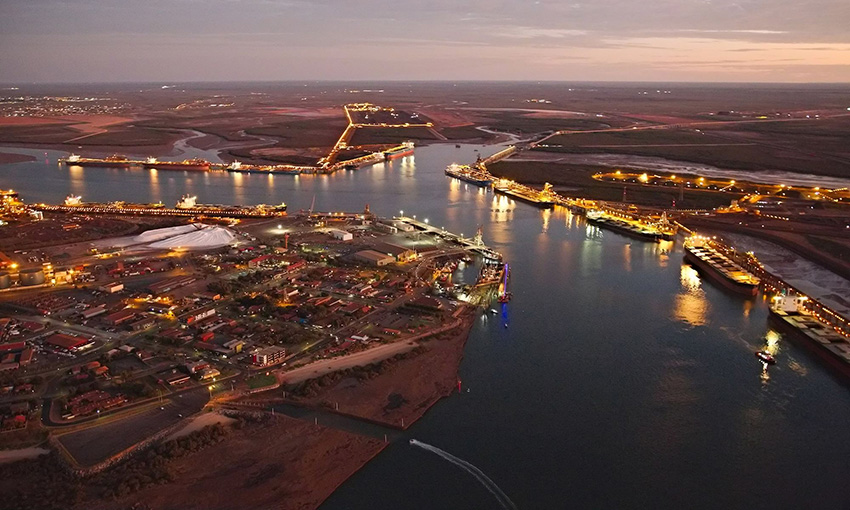IT WAS A stormy arrival for Mineral Resources newest addition to its team of transhippers at Onslow Iron as it wound its way around Cyclone Zelia.
MinRes Rosily arrived in Exmouth on the heavyload carrier Red Z 1 on 8 February, but was forced back out to sea by the threat of Zelia, returning on 14 February, and after unloading was taken to Onslow by the tug MinRes Bessie on 18 February for testing and commissioning.
MinRes is operating three transhippers for its Onslow Iron project and Rosily will be the fourth, with a fifth transhipper arriving in April. A spokesperson for MinRes said the initial fleet would consist of five transhippers which would all be used by Onslow Iron.
The arrival of the fourth transhipper will allow for a ramp up of the Onslow Iron project with a nameplate capacity of 35 million tonnes per annum.
Each enclosed transhipper measures 123 metres by 36 metres and has capacity to transport 20,000 tonnes of iron ore to ocean-going vessels anchored 40km from the Port of Ashburton.
MinRes Executive General Manager Marine, Jeff Weber, welcomed MinRes Rosily’s arrival.
“Our transhipping operation is an integral component of Onslow Iron’s innovative transport solution that has unlocked stranded iron ore deposits in the West Pilbara,” Mr Weber said.
“It’s exciting to welcome the fourth transhipper to fleet, with all vessels playing a critical role in the project’s ramp up.
“Later this year we will welcome our fifth vessel, which will complete our initial fleet and set us up as the largest and most sophisticated transhipping operation in Australia.”
MinRes transhippers have a shallow seven-metre draft when loaded with 20,000 tonnes, which avoids the need to construct a deep-water port and greatly reduces the project’s environmental footprint.
The project’s haulage, port and transhipper operations are fully enclosed to ensure dust-free transport of iron ore from the Ken’s Bore mine site, 150km east of Onslow, to the Port of Ashburton.





